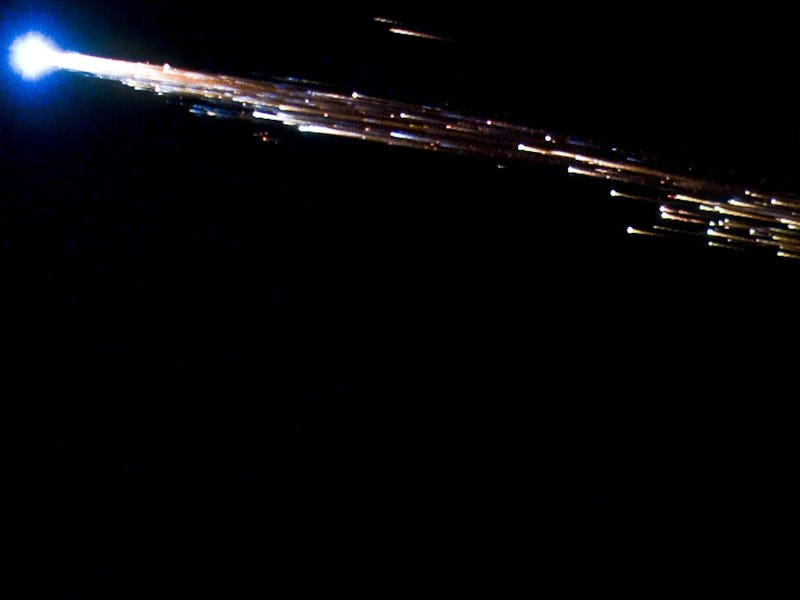The International Space Station’s Trash Is Burning Up in Earth’s Atmosphere
It's actually a planned dumpster fire in space.

Way back in March, Orbital ATK’s Cygnus spacecraft was launched to the International Space Station to deliver 4,000 pounds worth of supplies and to remove the trash from the excess cargo room. That trash was last seen burning up in the atmosphere this morning, which was all part of NASA’s big plans.
The Cygnus spacecraft, cluttered with two tons of space trash from the ISS, was allowed to hit Earth’s atmosphere hard as researchers around the world recorded debris patterns. The goal is to learn more about how to design spacecraft and other materials that can more easily burn up and disintegrate up in space, without a chunk making it back to the surface and acting as a potential threat to people’s safety. Cygnus was ablaze for about 20 minutes while sensors and cameras collected as much information as they could.
Not very many items can feasibly make it back to the surface — Earth’s atmosphere is a pretty robust obstacle that vaporizes most objects that aren’t specifically fortified with heat shielding. But every now and then, something does make it back to the ground. Just last year, a piece of a SpaceX rocket launch was found in the sea just southwest of England. Just a few thousand miles in the opposite direction, and that rocket part might have ended up crashing through someone’s house.
The problem with learning how to design more disposable spacecraft is that you need to be able to closely study how these objects reenter the atmosphere. And there just isn’t a whole lot of data on that front. The Cygnus reentry should help clue engineers in on some of the ways they can better design spacecraft that are as dependable and safe as they are disposable.
And to boot, Orbital ATK and NASA will conduct two more similar experiments using other Cygnus capsules on future ISS resupply missions later this year.